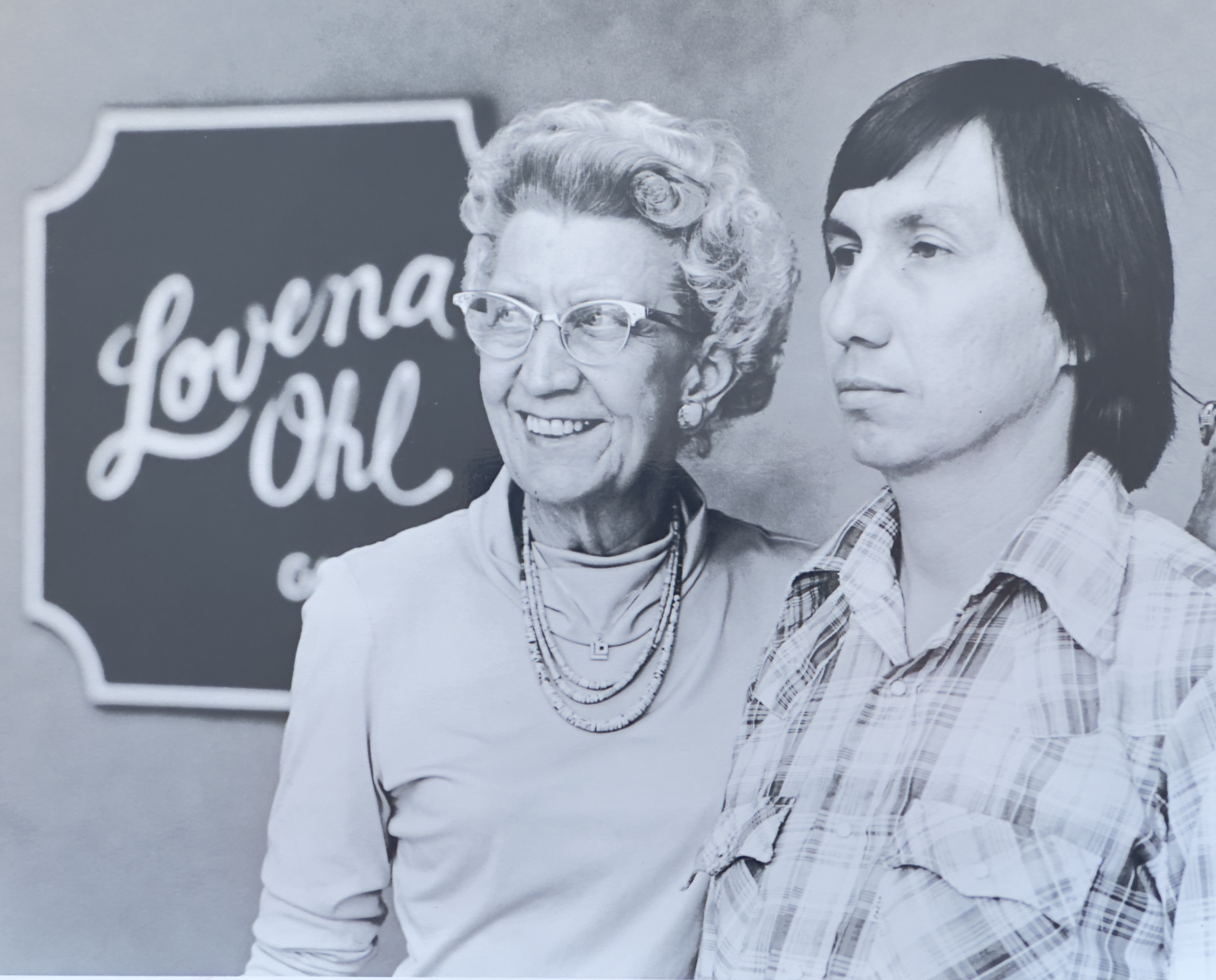Larry Golsh


After Lovena Ohl’s passing in 1994, her grandnephew, Bill Faust Il, embraced her legacy by opening his own gallery. In 1996, he founded the Faust Gallery in Scottsdale, Arizona, with a special focus on showcasing the incredible talents of Native American artists while also branching out into contemporary art today. The gallery has presented the stunning works of talented jewelers like Larry Golsh, who is featured in the photograph with Lovena.
Larry Golsh, born in 1941, is a celebrated Native American jeweler and sculptor, known for his innovative designs and top-notch craftsmanship. Growing up on the Pala Mission reservation near San Diego, California, Larry draws deep inspiration from the prehistoric rock art in his area, weaving his cultural heritage into each piece he creates.
Initially, Larry studied architecture and sculpture at Arizona State University, but everything changed in 1969 when he met the talented Hopi jeweler Charles Loloma. This meeting sparked a newfound passion for jewelry-making in Larry, leading him to blend traditional Native American motifs with modern designs.
He’s especially known for his impressive skills in tufa casting, a technique where he carves designs into porous volcanic rock to create unique molds for metal casting. Larry’s expertise in this method, along with his creative use of high-karat gold and beautiful gemstones like diamonds, lapis lazuli, coral, onyx, and charoite, truly sets him apart in the world of Native American jewelry.
Larry Golsh has accomplished international fame as a jeweler and sculptor, known for his unique designs and exceptional craftsmanship. Growing up on the Pala Mission reservation near San Diego, California, Golsh learned admiration and respect for the environment and feels a strong connection to the universe which is reflected in the harmony of his designs. Many of his designs are inspired by prehistoric rock art found in the hills and canyons of Southern California.
Golsh studied architecture and art at Arizona State University where he met renowned sculptor Ben Goo who encouraged and inspired Golsh. In 1969 he began to work with Paolo Soleri’s Arcosanti project touring major art museums in the U.S. and Canada. It was shortly after that he met Hopi jeweler, Charles Loloma, who Golsh credits, as his inspiration for beginning his world-renowned jewelry designs.
Forbes magazine in their article “American Fabergé” said of Golsh and Loloma, “They have attained a whole new aesthetic level, keeping the vital connection with their past, yet transcending it. Their style is now fully international.”
Golsh has been the recipient of numerous awards and the subject of many articles. He has received two NEA grants and has been featured in the PBS documentary film, “Larry Golsh-American Indian Artist”
One of the most accomplished artists of our time, Golsh has defied the boundaries traditionally placed on Native American jewelers. He was the first Native American to study at the Gemological Institute of America and with master jeweler, Pierre Touraine. Golsh often uses diamonds and other precious stones in conjunction with traditional cultural techniques. The result is abstract sculptural pieces that are innovative yet possess a timeless quality



